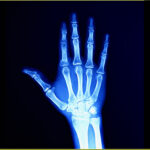
Sores, chancres, rashes, burning while peeing, or unusual discharge. Different sexually transmitted infections (STIs) can have different symptoms. Some may have no symptoms at all. But they are very much a risk to sexually active individuals, especially young adults.
The wide prevalence of STIs
STIs such as chlamydia, syphilis, and gonorrhea afflict millions of people worldwide.
Globally, the WHO estimates that 1 million people contract an STI every day. In the whole year of 2020, they estimated 374 million new infections from one of four pathogens- Chlamydia trachomatis (a bacteria that causes chlamydia), Neisseria gonorrhoeae (a bacteria that causes gonorrhea), Treponema pallidum (a bacteria that causes syphilis), and Trichomonas vaginalis (a protozoan that causes trichomoniasis).
In the US, the CDC reported over 2.5 million cases of chlamydia, syphilis, and gonorrhea in 2021. The real number is likely higher because not everyone pays attention to their symptoms or seeks treatment.
One of the reasons for the widespread prevalence of STIs is that they can be asymptomatic or have few symptoms that come and go. Being aware of the risk of STIs, paying attention to the symptoms, getting tested, and getting timely medical help can slow the spread of STIs.
Symptoms of chlamydia
Chlamydia can often be asymptomatic. A majority of women and about half the men will not notice any remarkable signs that tell them that they may have been infected with chlamydia.
When symptoms are present, they include:
- Burning sensation during urination
- Pain, redness, or white spots in the mouth or throat
- Pain, bleeding, or discharge from the anus
- Unusual discharge from the penis, and pain or discomfort in the testicles in males
- Unusual discharge from the vagina, pain or discomfort in the lower abdomen, and vaginal bleeding between menstrual periods in females
- Both males and females can get complications that can lead to infertility.
Symptoms of gonorrhea
A majority of males and females who have gonorrhea have no symptoms. Symptoms when present include:
- Pain or burning sensation during urination
- Anal itching, soreness, bleeding, discharge, and painful bowel movements.
- In males, a white yellow, or green discharge from the penis, and rarely, pain and swelling in one or both testicles.
- In females, vaginal bleeding between menstrual periods and increased vaginal discharge. Untreated gonorrhea can cause serious harm to the female reproductive system causing infertility.

Symptoms of syphilis
One of the oldest known STIs, syphilis was once thought to be in decline. But the infection has witnessed a resurgence, with 177,000 reported cases in the U.S. in 2021.
The disease progresses in stages, each with its own symptoms.
Primary syphilis- development of a chancre.
A chancre is a small painless sore about 0.3-3 cm in diameter, that can often (but not always) appear firm and round. A chancre is the first symptom of syphilis. It appears about 3 weeks after a sexual encounter with someone who has syphilis, though it can take as long as 3 months for the chancre to develop. Chancres develop on genital areas such as on the penis, inside the vagina, in or around the anus, or in or around the mouth.
Due to their painless nature and sometimes hidden location (e.g. inside the vagina), infected individuals may not notice that they have developed a chancre. People usually develop a single chancre, though multiple chancres have also been reported. Coming in contact with a chancre can spread syphilis. Chancres go away on their own in about 3-6 weeks without treatment. However, the syphilis is still active.
Secondary syphilis
About 2-12 weeks after the appearance of the chancre, untreated syphilis may cause a rash that spreads all over the body including the palms of the hands and soles of the feet. Other symptoms include fever, headache, muscle ache, fatigue, loss of hair in clumps or patches, unintentional weight loss, and swollen lymph glands.
Syphilis is contagious to others in this stage, which lasts about 2 months without treatment.
Latent syphilis
Untreated syphilis can progress to a hidden stage that can last for years. In this latent stage, the infection is still active and spreading through the body but there are no apparent symptoms. The infection in this stage can be laterally contagious- it can pass from an infected pregnant person to their fetus in the womb. This type of syphilis called congenital syphilis, has been showing up in alarming numbers in newborns indicating a wider epidemic. In 2022, 3700 newborns were diagnosed with congenital syphilis which caused 31 stillbirths and 51 infant deaths.
Tertiary stage
After 10-30 years, untreated syphilis can cause damage to the eyes, heart, and the brain. It can cause blindness, deafness, memory loss, paralysis, and death.

Early detection and treatment
Syphilis, gonorrhea, and chlamydia are bacterial infections that are fully curable by antibiotics. Some strains of gonorrhea can be resistant to treatment by some antibiotics, but your healthcare provider will be able to find you a treatment that removes the infection from your system.
However, antibiotic treatments cannot undo the permanent harm the STIs have already done to the body. Early detection and treatment are key to preventing long-term harm.
Getting tested
Since STIs can be asymptomatic, the only real way to know if you have an STI is by getting tested. The sooner the treatment begins, the better your chances of not developing long-term complications due to the infection.
Test sites
You can access testing for STIs through your medical provider or by finding a testing location near you using the CDC’s website:
https://gettested.cdc.gov/
At-home test kits
You can collect your own samples at home using at-home STI test kits. Such kits will instruct you to collect your samples and send them to the laboratory for testing. Chlamydia and gonorrhea can be tested using easy-to-collect urine samples.
The information provided in our blog posts is for informational purposes only and is not intended as a substitute for professional medical advice, diagnosis, or treatment. Always seek the advice of your physician or other qualified health provider with any questions you may have regarding a medical condition. Never disregard professional medical advice or delay in seeking it because of something you have read on this blog.
 Can You Detect Arthritis from an X-Ray?
Prev post
Can You Detect Arthritis from an X-Ray?
Prev post





